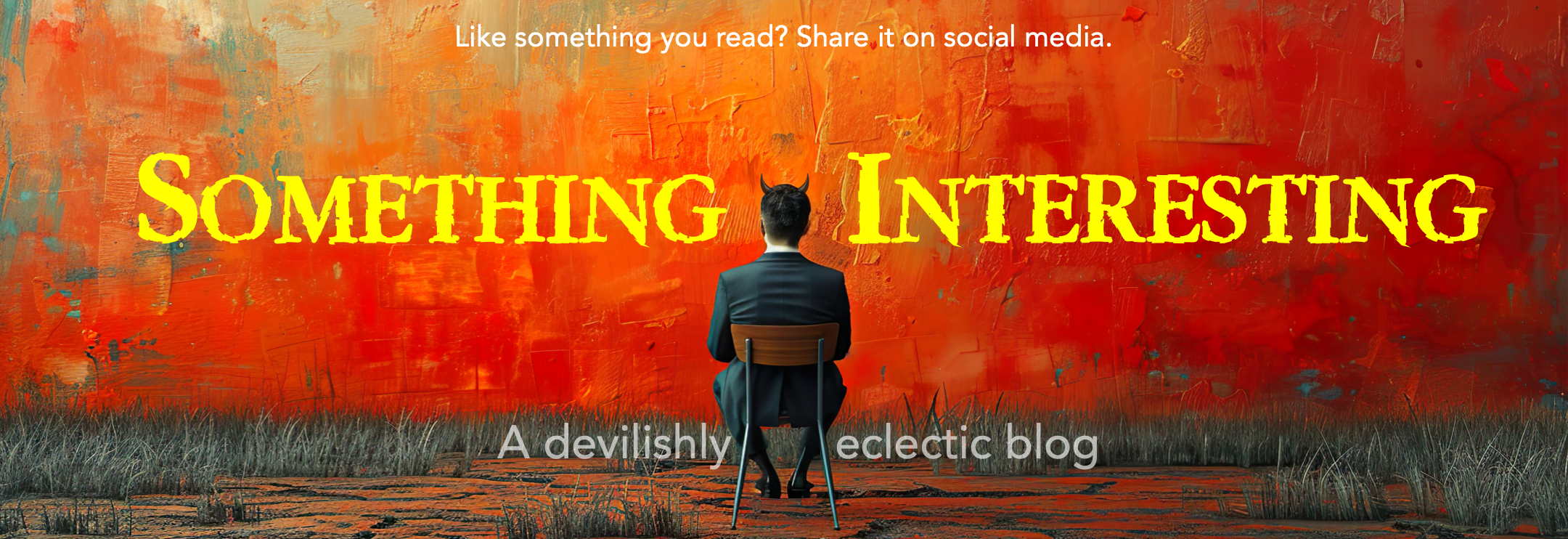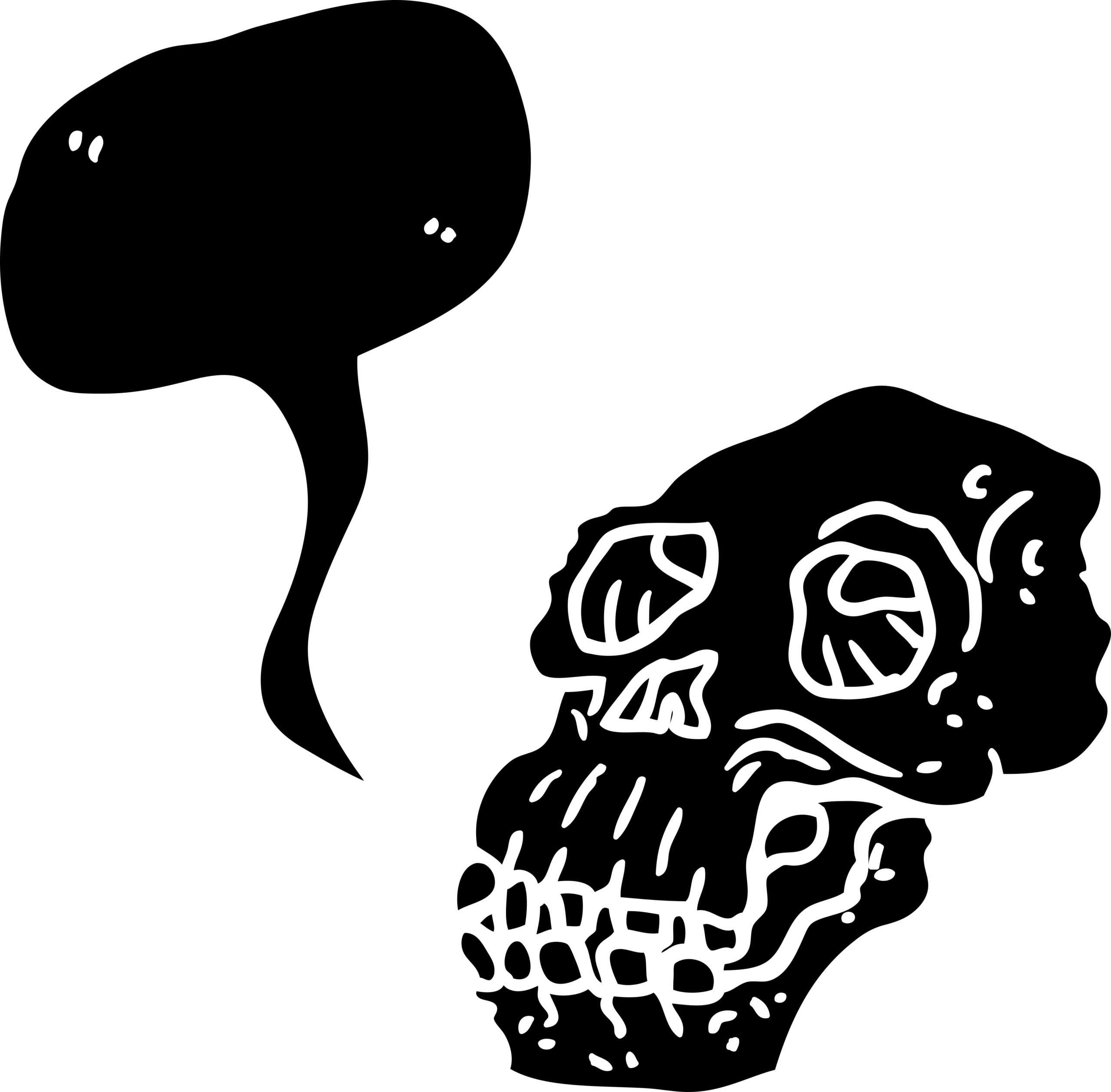
For 10,000 years or more, early humans and Neanderthals co-existed in Europe and Asia. Then, around 40,000 years ago, a climate shift involving cooling temperatures and reduced rainfall placed survival pressure on both. No one knows for sure the extent to which the two species competed (or explicitly battled) for scarce resources, versus simply scrambling relatively independently to adapt to the changing environment (there are other possibilities; see the Postscript). Whatever the case, in the end only humans emerged from this bottleneck.
In a recent post I shared speculation that the survival of early humans might have been a side effect of the size of their social groups. Early human hunter-gatherers may have traveled in larger troupes than Neanderthals, allowing them, as one writer put it, to benefit from “more brains.” The basic idea: With more individuals in a troupe helping to confront each challenge, the odds went up that one of them would find a solution.
My post elaborated on this idea by pointing out that, even if early humans and Neanderthals possessed identical linguistic and learning capabilities, larger social groups could lead to richer individual relational networks and, with those, more successful cultures. That is to say, despite similar brain power humans may have become smarter in the functional sense. Thee possibility of this outcome is validated by contemporary evidence showing that boosting relational repertoires boosts intelligence (as measured by IQ scores).
That’s one story. But what if humans and Neanderthals weren’t equally intelligent after all? “Intelligence” is a loosey-goosey concept, so to explore this idea we’d have to be a bit clearer on what, exactly, early humans might be capable of that Neanderthals weren’t. A recent proposal does just that.
As preface, note that the proposal is not a return to the old stereotype of Neanderthals as oafish idiots. Rather, the proposal maintains that early humans and Neanderthals had identical speech-producing capabilities and, to go with that, similar “cognitive” abilities — save one critical exception: what we behavior analysts call relational framing.
We already know that humans are uniquely precocious among living species when it comes to derived stimulus relations, even when compared to our closest surviving relatives, the great apes. It stands to reason, therefore, that whatever evolutionary change fueled our relational precociousness, it must have happened relatively recently. University of Reading’s Steve Mithen proposes that this Big Change is, in fact, one of the features that defines homo sapiens‘ divergence from the rest of the homo lineage, perhaps 250,000 years ago. If correct, this proposal means that homo neanderthalensis lacked our relational precociousness. As a result, when the climate bottleneck arrived, Mithen argues, humans simply had better intellectual tools for adapting to changing conditions.
Unfortunately, we have no access to other human species to test their relational abilities because, of course, aside from homo sapiens, they are all extinct. How then does Mithen arrive at his conclusion? Multiple lines of circumstantial evidence are involved, but the linchpin involves brain anatomy. For the sake of brevity allow me to oversimplify. The cerebellum is a structure at the back of the brain that contains over half of the body’s total neurons. Although it’s heavily involved in motor control it also plays a role in language. For instance, damage to the cerebellum impairs the ability to learn new words (or, you might say, to add new nodes to relational networks). Reconstruction of fossil skulls indicates that the cerebellum was considerably larger in early humans than in Neanderthals.

But that is not all. Human skulls, and brains, have evolved to be rounder than those of other hominins, and the key speculation is that this anatomical arrangement facilitates enhanced interconnectedness among brain areas. More complex neural networks, so the argument goes, means more interconnected ideas, which sounds a lot like what we call stimulus relations.
Now, it’s definitely risky to assume too much about behavioral function based on brain anatomy — after all, bees, with their teensy brains that are shaped nothing like ours, are capable of all sorts of cool behavioral feats. But let’s suspend disbelief and see where this leads.
In Mithin’s estimation, four major changes distinguish the historical development of language from the reflexive vocal calls of other animals (I’ll forego a translation into “behavior-ese,” but even without this a progression of behavioral complexity should be evident):
- Iconic words (“whose form is linked to their meaning;” e.g., bang and wiggle)
- Abstract words, those whose form is arbitrary and “meaningful” only within the shared behavioral history of a verbal community (e.g., house, tree, person)
- Grammar and syntax, i.e., a system of stringing words together to express complex ideas
- “Metaphor,” or the interconnectedness of idea
Based on a variety of threads of evidence, including anatomical, Mithin proposes that these capabilities emerged sequentially, approximately as shown a below, meaning that hominin species would be distinguished not only by morphology and cultural artifacts, as is traditional in paleontology, but also by verbal capabilities rooted in brain evolution. Notice that metaphorical language is proposed to be the last feature to emerge — and unique to homo sapiens.

Mithin’s hypothesis shares with Relational Frame Theory (RFT) the assumption that derived stimulus relations and language as we know it today are inseparably intertwined. It differs from RFT (perhaps) in imagining proto-languages that are non-metaphorical, that is, not built on relational underpinnings. As Mithin writes:
By linking up different clusters in the brain that are responsible for storing groups of concepts, our species gained the capacity to think and communicate using metaphor. This allowed modern humans to draw a line between widely different concepts and ideas.
This was arguably the most important of our cognitive tools, enabling us to come up with complex and abstract concepts. While iconic words and syntax were shared between H. sapiens and Neanderthals, metaphor transformed the language, thought and culture of our species, creating a deep divide with the Neanderthals. They went extinct, while we populated the world and continue to flourish.
If Mithin is right, we would have an interesting new perspective on RFT’s contention that language is framing and framing is language. I’ll confess that I’ve always been a little uncomfortable with this proposition… not with the possibility that it might be correct, but rather with the extent to which RFT takes it on faith. To my knowledge, there’s no incontrovertible evidence for this idea. It’s more of a premise of RFT than a testable prediction.
Anyway, the hitch in the present discussion lies in how we could determine whether Mithin is right. For what it’s worth, there have been anecdotal (and distinctly unconfirmed) reports of sightings in Indonesia of a primitive hominin, homo floresiensis, that is widely thought to be extinct… How informative it would be to study them! That failing, all direct evidence of the relational abilities of relevant species other than homo sapiens has been lost to time.
If only fossils could talk.

Postscript
There are, besides direct competition for resources and violent conflict, additional ways that human-Neanderthal contact could have resulted in the Neanderthals’ demise. For instance, we know that the two species interbred, so perhaps Neanderthals were simply absorbed into the human population. Since modern humans have only a small amount of Neanderthal DNA, however, this would have had to occur in a context where viable hybrid offspring were uncommon (e.g., see here). Another possibility is that, much as happened when Europeans first encountered indigenous peoples in the Americas, perhaps early humans carried infectious diseases to which Neanderthals succumbed en masse.
